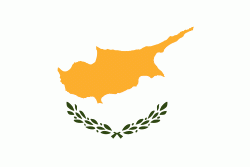Khirokitia (Choirokoitía)
Khirokitia (sometimes spelled Choirokoitia; Χοιροκοιτία, suggested meaning Pig-cradle, from χοίρος 'pig, boar' + κοιτίς 'place of origin, cradle'; Hirokitya) is an archaeological site on the island of Cyprus dating from the Neolithic age. It has been listed as a World Heritage Site by UNESCO since 1998. The site is known as one of the most important and best preserved prehistoric sites of the eastern Mediterranean. Much of its importance lies in the evidence of an organised functional society in the form of a collective settlement, with surrounding fortifications for communal protection. The Neolithic aceramic period is represented by this settlement and around 20 other similar settlements spread throughout the island.
The site was discovered in 1934 by Porphyrios Dikaios, director of the Department of Antiquities who carried out six excavations between 1934 and 1946. His initial findings were published in The Journal of Hellenic Studies in 1934. Further excavations were then held in the early 1970s but were interrupted by the Turkish invasion of the island. A French mission under the direction of Alain Le Brun resumed excavation of the site in 1977. It was occupied from the 7th until the 4th millennium BC.
The site was discovered in 1934 by Porphyrios Dikaios, director of the Department of Antiquities who carried out six excavations between 1934 and 1946. His initial findings were published in The Journal of Hellenic Studies in 1934. Further excavations were then held in the early 1970s but were interrupted by the Turkish invasion of the island. A French mission under the direction of Alain Le Brun resumed excavation of the site in 1977. It was occupied from the 7th until the 4th millennium BC.
Map - Khirokitia (Choirokoitía)
Map
Country - Cyprus
 |
 |
| Flag of Cyprus | |
The earliest known human activity on the island dates to around the 10th millennium BC. Archaeological remains include the well-preserved ruins from the Hellenistic period such as Salamis and Kourion, and Cyprus is home to some of the oldest water wells in the world. Cyprus was settled by Mycenaean Greeks in two waves in the 2nd millennium BC. As a strategic location in the Eastern Mediterranean, it was subsequently occupied by several major powers, including the empires of the Assyrians, Egyptians and Persians, from whom the island was seized in 333 BC by Alexander the Great. Subsequent rule by Ptolemaic Egypt, the Classical and Eastern Roman Empire, Arab caliphates for a short period, the French Lusignan dynasty and the Venetians was followed by over three centuries of Ottoman rule between 1571 and 1878 (de jure until 1914).
Currency / Language
| ISO | Currency | Symbol | Significant figures |
|---|---|---|---|
| EUR | Euro | € | 2 |
| ISO | Language |
|---|---|
| EN | English language |
| EL | Greek language |
| TR | Turkish language |















